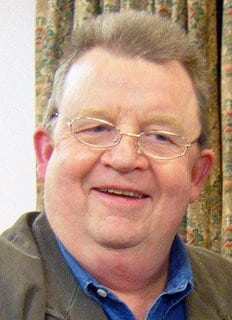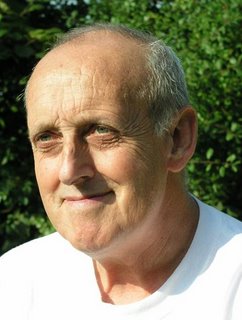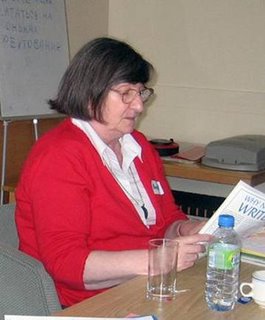
Nottingham Writers' Club
Past Courses/Workshops
Writing your Non-fiction Book and your Novel - Tutor Roy Bainton
19th June 2010

Part 1 Planning and Research. A general outline on how to make a book memorable by diligent research.
Part 2 Something Borrowed, Something New? How to construct fresh angles and deliver something new and original for the reader while still maintaining accuracy.
Part 3 An exercise to rough out a plan of a book or short story.
Lunch
Part 4 Exercises using the internet including how to plan project files
Part 5 Developing characters and making them live. Planning your characters and examining how successful authors make theirs 'real'.
Part 6 Discussion on delegates' favourite works and how proper research made that book so memorable.
Part 7 To take away:
A full list of information and links connected to the day's research
A project to work on at home - write a synopsis to sell your idea
(The best three will be read out at the next available NWC meeting.)
For information on Roy Bainton, please go to www.roybaintonwrites.com.
Steve Wetton on Writing for TV
May 2010

Steve is a professional script writer with a decades long record of selling TV scripts. This meant that although we were given a lot of information on the theory of script writing, he also told us of his personal experiences in the business, good and bad.
It would be impossible to list all the information he gave us, but here's a selection.
Keep the number of characters to a minimum. Everyone with a speaking part has to be paid. Keep the story simple and believable. If the reader doesn't like the first page, they won't read on. Write character back stories/biographies because you can't write about someone you don't know well. Pay attention to structure because it works. Most scripts fail because of the lack of it.
In a 30 minute script, the writer must introduce at least one main character, set the tone and genre, provide a hook, write in complications, tell a good story that builds to a climax and finish with a satisfactory resolution.
Take three characters and a basic plot line. Choose which of the three points of view you want to write from and take it from there. The three characters were shared out and everyone came up with a different plot.
Take the story of Cinderella and write a line for each major scene. All scenes should have the classic beginning, middle and end, and never be padded.
Dialogue is very important and has five functions. To give necessary information, delineate character, push story along, set up or pay off a joke and to have a sub text.
Theme is not the same as story. Story is what happens to the characters, theme is why it happens, eg they all have secrets.
Take three unconnected scenes and write in one paragraph how they're linked.
Steve always works in the same way and puts structure before dialogue.
'Get the main characters, write a single page outline, turn the outline into a simple step outline in 12 to 15 scenes. Write the dialogue. Juggle with the scenes, taking some out and adding more. Go through the dialogue, making sure it's effective. And last - very important - read it out loud. Only then will you know if it works.'
And to encourage us even further, he very kindly offered to read any script we wanted to submit to him and send us feedback.
Everyone had a great time, including Steve. He sent us this e mail. 'Everyone was friendly and welcoming - as usual with your group. I enjoyed the day.'
May Workshop
Writing for Women's Magazines

The Club's first workshop was held in April and tutored by Bead Roberts who is an expert on writing for women's magazines.
Fourteen delegates attended and it was good to see that men as well as women are interested in this genre.
| Morning | Afternoon |
| Creating and naming credible characters The importance of conflict Finding convincing settings Pacing the story |
Realistic dialogue Intriguing beginning Interesting middles Satisfying endings |
Bead got right down to business and soon we were working on the first item. We were given a list of names and asked what these suggested, what sort of name would we give a list of people and even which of these names sounds most trustworthy. This highlighted how important names are the instant impression they give to the reader.
Without conflict there is no story and without convincing settings the it doesn't ring true. In a magazine story, writers don't have the luxury of thousands of words so the picture has to be clear from the outset.
Like all stories, the format of beginning, middle and end is satisfying to readers and most magazine stores need to have an uplifting ending.
Pace is also important and, like everything we write, it's tempting to come to the end and say, 'that's it, it's finished'. But most of the time it's only the beginning so don't hold back on re-writing, especially after putting the work away for a time then going back to it.
Coffee breaks and lunch times were a great opportunity to talk and there was no shortage of conversations as people got to know each other. This is always an import part of any workshop. Writing is a lonely business and an opportunity to share ideas and experiences can't be undervalued.
Bead had us working hard all day and not a minute was wasted. We were either listening or writing or reading out our work. Praise is great but constructive criticism is better as it's always easier to learn from mistakes than from getting it right first time.
She gave us a lot of information about which magazine is interested in what type of story. Some magazines insist on paper copies, others will accept e mail contributions. If one magazine rejects the story because it isn't suitable for their readership, there will always be another for whom that piece of work will be acceptable.
As magazines change over time, it's important to buy the latest copies to see what they're accepting now. The internet is always a valuable asset as a lot of magazines now publish their guidelines on websites.
All credit to Bead for making the day interesting for all delegates, from beginners to published writers. The remarks on the feedback forms were very complimentary and included comments such as 'excellent, inspiring, entertaining, informative and very comprehensive'.
Would you like to know more about the tutor.
: email: :

|
|
Site Menu: Home | About Us | Audio Recordings Info | Audio Recordings | Bios | Competitions | Contact Us | FAQ | Gallery | History | Membership | Members Sucesses | News | Programme | Round up of Past Events | Speakers | Workshops | Privacy & Cookie Policy |
|
